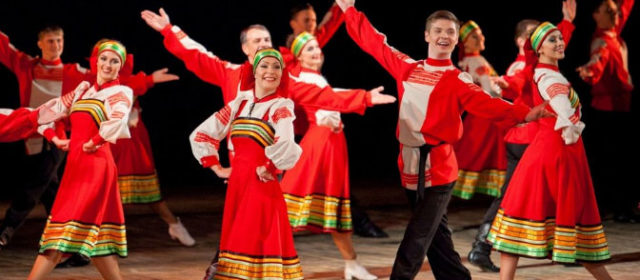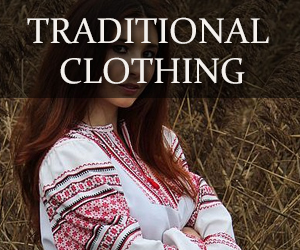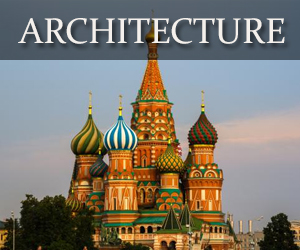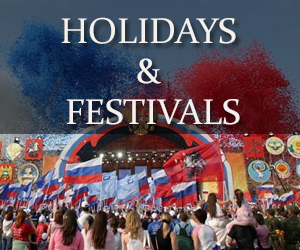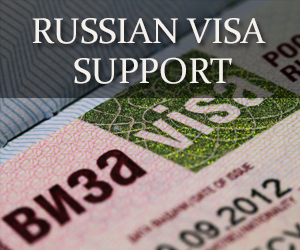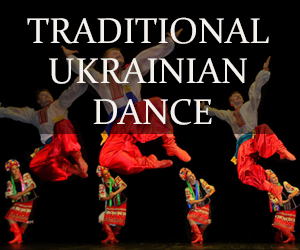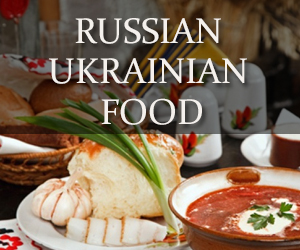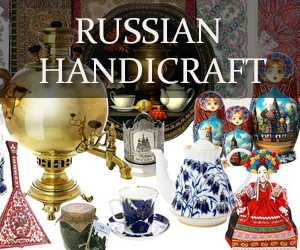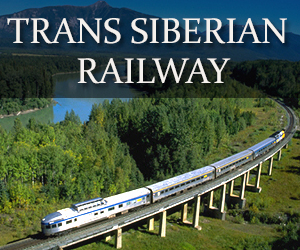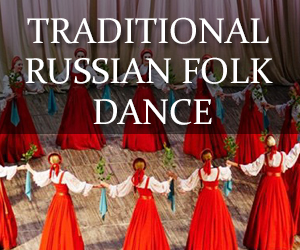Traditional Russian folk dance is as broad and diverse as the nation itself. While most foreigners identify traditional Russian dance with the stomping and and knee bending characteristic of Eastern Slavic dance styles, many forget about traditions of dance that originated from Turkic, Uralic, Mongolic and Caucasian peoples who are also native to Russia.
Below we have identified a small list of popular folk dance from Russia. The first four (from the Khorovod to the Chechotka), are traditional Russian dances that first come to mind when thinking of Russian folk dance. The remainder are a broad range of dances from ethnic minorities found within Russia.
See also: Folk Dance from Ukraine
Folk Dance From Russia
Khorovod (Хоровод)
Known as Tanok (танок) in Ukrainian and Karagod (карагод) in Belarusian, the dance is a traditional Slavic art form that often combines both a circle dance and chorus singing.
Barynya (Барыня)
Barynya, which literally means “landlady”, is a traditional Russian folk dance that combines chastushka (a traditional folk poem that is often in the form of satire) with spirited dancing. The dancing usually has no set choreography and consists mostly of fancy stomping and squatting. The refrain “Barynya, barynya, sudarynya-barynya” (landlady, landlady, madam-landlady), is also typically repeated throughout the course of the dance.
Kamarinskaya (Камаринская)
Kamarinskaya is a traditional Russian folk song and dance that was used in Mikhail Glinka’s orchestral work “Kamarinskaya” (1848).
Chechotka (Чечётка)
Chechotka is a traditional Russian “tap dance” that is performed in Lapti (bast shoes) and under the self-accompaniment of a Bayan (accordion).
Karelian Dance
Dance originating from the Karelian peoples of present day Republic of Karelia (Russia), Leningrad Oblast and Finland. Culturally and linguistically related to their Finnish cousins, Karelian dance also has similarities.
Komi Dance
Below is a folk dance originating from the Komi peoples of north European Russia and northwestern Siberia (mostly west, but also east of the Ural mountains). While long amalgamated into the broader Russian culture, many remnants of the Komi culture still exist. This includes a living language belonging to the “Uralic” language family, a strong subsistence based economy in more northerly Komi territiorries (which includes reindeer husbandry), as well as traditional Komi song and dance.
Ingush Dance
The Ingush peoples are a native ethnic group of the North Caucasus who predominantly inhabit the Russian Republic of Ingushetia. Closely related culturally and linguistically to their Chechen neighbors, music, song and dance are highly regarded in the Ingush culture.
Chechen Dance
The largest (and most widely known) of all ethnic groups in the North Caucasus are the Chechens. Like their Ingush neighbors, Chechens are an ancient people that have developed a rich culture of song and dance.
Tatar Dance
Russia’s largest ethnic minority is the Tatar, with a population of 5.5 million. Sunni Muslims of Turkic decent, the Tatar can be broken into numerous subgroups that stretch not only throughout Russia, but parts of Turkey, Ukraine and Central Asia. The largest group is the Kazan (Volga) Tatar who originated from the historic state of Volga Bulgaria at the confluence of the Volga and Kama rivers in present day Russia. These ethnic Tatar (“Bulgars”) have managed to preserve their language and culture which includes a wide range of traditional folk dance.
Bashkir Dance
Another culture of Turkic decent, and close relatives to the Tatar (above), are the Bashkir peoples native to the region of Bashkortostan. Converted to Islam by the Tatar in the 13th century, this independent and historically belligerent ethnic group has nonetheless preserved its own unique culture independent from their more prominent Tatar neighbors.
Chuvash Dance
Yet another culture of Turkic decent is that of the Chuvash peoples. Native to an area stretching from the Volga to Siberia, most Chuvash presently live in and around the Russian Chuvash Republic. One of the big differences they have with that of their Turkic cousins and neighbors is their faith. Chuvash are predominantly Orthodox Christian. Chuvash also have their own language, and of course, unique traditions of song and dance.
Kalmyk Dance
A small but unique culture within Russia is that of the Kalmyk peoples. A culture of Mongolic decent, the Kalmyk inhabit the autonomous Republic of Kalmykia on the western shore of the Caspian Sea. The only state in Europe where the dominant religion is Buddhism, Kalmykia and its inhabitants offer a fascinating glimpse into the ancient culture, song and dance of western Mongolic peoples – known as Oirats.

